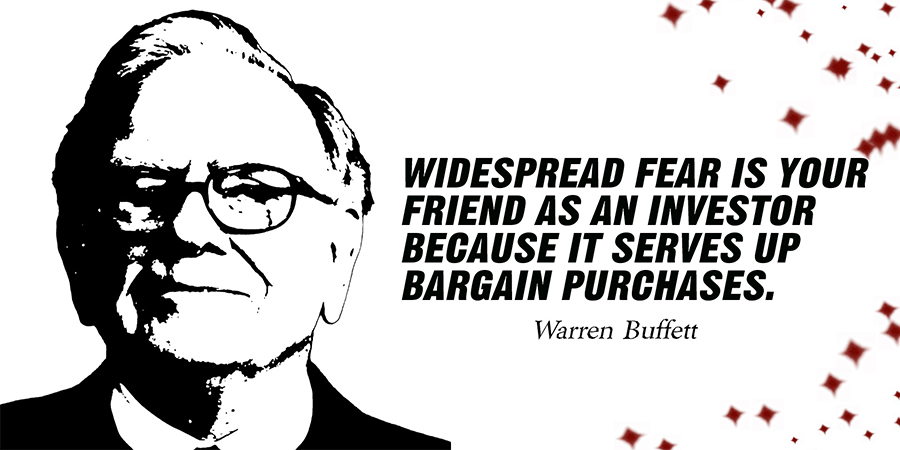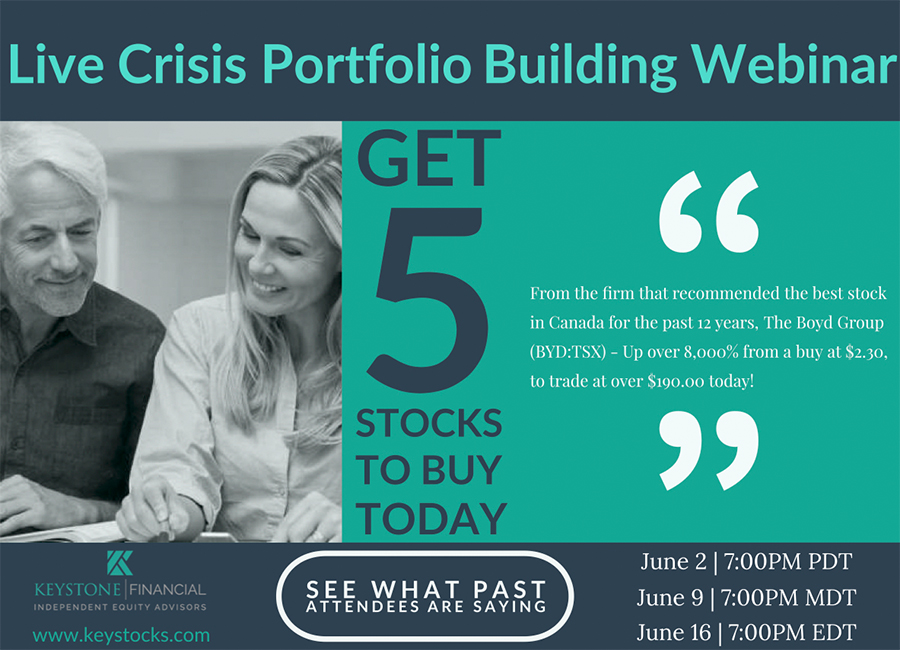Warren Buffet Wishes He Could Buy These Stocks – He Can’t, But You Can!

SPONSORED CONTENT
Do you know why Warren Buffett recently added to his position in U.S. Bancorp (USB:NYSE), PNC Financial Services (PNC:NYSE) and has long held a position in beverage behemoth The Coca-Cola Company (KO:NYSE)? In the latter case, it’s not because the world’s largest beverage company is an untold secret, or the company is growing earnings at 35% annually (it’s not). And it is certainly not because Buffett got a sweetheart deal (he didn’t). It’s simple: Buffett bought more shares in U.S. Bancorp (USB:NYSE) and PNC Financial Services (PNC:NYSE) because they are really, really big.
Yes, Coca-Cola is a solid company. But the law of large numbers tells us it is far more difficult to double profits from a base of $10 billion than from $1, $5, or even $17 million.
For Buffett, bigger is better

Toward the beginning of Buffett’s investing career, it wasn’t uncommon for the Oracle of Omaha to post 30% or 40% annual returns in Berkshire Hathaway’s (BRK-B:NYSE) equity portfolio. But as the size of the capital base at Buffett’s disposal grew larger, those stock returns began to shrink. “We do need to deploy cash, but we can’t put many billions to work every year in spectacular businesses,” Buffett said. “To move the needle at Berkshire, they have to be big transactions.”
In the aftermath of the 2008/09 financial crisis and in recent years, Buffett’s biggest investments were in blue-chip behemoths like Johnson & Johnson (NYSE: JNJ), Wal-Mart (WMT:NYSE) , and Wells Fargo (WFC:NYSE).
Those were all solid investment in great companies, to be sure, but it is unlikely they will propel Buffett’s portfolio to those 40% annual returns he generated in the past. And they certainly won’t help Buffett realize the 50% annual returns he famously stated he could achieve if he had less money to invest – and could invest in great small-cap stocks.
“Anyone who says that size does not hurt investment performance is selling. The highest rates of return I’ve ever achieved were in the 1950s. I killed the Dow. You ought to see the numbers. But I was investing peanuts then. It’s a huge structural advantage not to have a lot of money. I think I could make you 50% a year on $1 million. No, I know I could. I guarantee that.”
– Warren Buffet
Unfortunately, Buffett understands his predicament all too well. “Size is always a problem,” Buffett told The Wall Street Journal’s Jason Zweig. “With tiny sums [to invest], it’s extraordinary what you can find. Most of the time, big sums are one hell of an anchor.”
Anchors aweigh!
So, what would Buffett buy if he weren’t relegated to the realm of blue chips? We think he’d be scooping up shares of great small-cap stocks. After all, they have historically outperformed large-cap stocks — a gap that has widened over the past 35 years:
| Annualized Return | Small Caps | Large Caps |
| 1926 to 2008 | 11.7% | 9.6% |
| 1973 to 2008 | 12.8% | 9.2% |
Undoubtedly, Buffett could get these higher returns – and better. Unfortunately, it’s impossible for him to buy small-cap stocks. But before we get to why Buffett can’t buy small caps, let’s look at why small caps outperform in the first place.
Massive potential returns.
By definition, smaller companies have much more room to grow. With annual revenue of about US$37 billion, Coca-Cola probably won’t be tripling that number anytime soon. The relatively tiny independent auto repair shop operator, Boyd Group Services Inc. (BYD:TSX) on the other hand, one of the longest standing stocks on KeyStone’s Focus BUY List, has seen more than a 5-fold increase in its revenue over the past 12 years. Boyd has increased it’s earnings by more than 10 times and its stock price skyrocketed as a result.
For comparison purposes, below we see that Coca-Cola was a solid buy in 2008 as the financial crisis hit and its shares traded in the $26 range. Over the past 12 years the stock has returned around 139% including dividends.
| Earnings Growth Rate | Total Stock Return (div. incl.) | |
| Boyd Group | 35% | 8,950% |
| Coca-Cola | 9% | 139% |
But the Small-Cap’s gains are astonishing over the same period. The Boyd Group and its simple car repair business which was recommended to KeyStone’s Premium Small-Cap Research clients in November of 2008 at $2.30, has seen it shares rocket to recently close at CDN$204.00, for a gain of over 8,950%! In fact, over that period the company has created such strong cash flow it has distributed over CDN$4.25 per share in distributions (dividends) to shareholders on top of the tremendous share price gains. Again, it has paid us CDN$4.25 in cash, and we bought the shares for CDN$2.30!
On top of their room to grow, small caps don’t attract much attention from Wall & Bay Street analysts. In fact, in 2008, KeyStone was the only research firm covering the Boyd Group. This means savvy investors are more likely to find mispriced stocks when fishing in small-cap waters. It appears that Bay Street is finally beginning to catch on to the Boyd Group story, but there are still dozens of compelling small-cap companies monitored by just one or two analysts or zero — and many more that receive no analyst coverage at all!
Size Matters
So why doesn’t Buffett buy underfollowed small-cap stocks that could very well triple? It’s simple: He can’t.
Let’s revisit Buffett’s quote from earlier in the article: “We can’t put many billions to work every year in spectacular businesses,” Buffett said. “To move the needle at Berkshire, they have to be big transactions.”
Even after the Boyd Group had seen its’ share price rocket over 8,950% over the past 12 years (the best performing stock in all of Canada), its market cap is still barely $4 billion. Buffett couldn’t buy a stake in the company without driving the share price up significantly. And even if he were to buy the company outright, that $4 billion purchase would barely register in Berkshire’s US$490 billion valued business.
The real opportunities to buy Boyd were when it traded as a true profitable, cash producing small-cap with a market cap of under $1 billion. And it did so for a long time. In fact, when KeyStone originally recommended the stock to its clients, the market capitalization value of the business was in the range of just $25 million. Our clients received over 20 buy recommendations in the past decade on Boyd as it traded between $2.30 and $100. Giving clients plenty of opportunity to buy while it was great value, before a Big Fish like Buffett could even think about buying.
In other words, researching a small-cap companies like the Boyd Group, no matter how promising its prospects, simply isn’t worth Buffett’s time.
But it’s definitely worth our time
Individuals who invest dollar amounts in the thousands, however, should be scouring the markets every day for the next Boyd Group. It’s the only way to even approach those 30% or 40% annual returns.
But be forewarned: Just because a company is small and underfollowed does not guarantee Boyd Group -like returns.
That’s why in addition to great growth prospects and limited (or no!) analyst coverage, our team of experts at KeyStone’s Small-Cap Research seeks out growth and dividend growth small-caps that have:
- A strong balance sheet.
- Positive cash flow.
- Attractive Valuations.
- Potential for a dividend (or dividend increases).
- A management team with a significant share ownership.
- A business we can understand.
- Operations in relatively safe jurisdictions.
- A positive industry outlook or niche outlook.
- Potential for hidden assets.
- Market-beating potential over the next three to five years.
Special Announcement: Crisis Investing 2.0 – Portfolio Building – Strategies to Survive, Then Thrive
There are two things you can do with your stock portfolio in a crisis – ignore it or take action.
Make a positive change in your portfolio today – join the thousands of who have attended one of KeyStone’s simple, no nonsense Crisis Portfolio Building Seminars. We will show you strategies to survive, then thrive.

Let us help you navigate the markets, take control of your financial future and guide you to the next explosive small-cap stock!
What will you learn?
- Keystone will show you how to take action in your portfolio during a crisis and start building a simple 15-25 stock portfolio designed to enrich you, not your advisor.
- Explore how the current Crisis could be a tipping point for behavioural and technological change in areas such as work from home, cloud computing, cybersecurity, artificial intelligence, the internet-of-things and more.
- With a 10-year Canadian Government Bond paying a paltry 0.50%, high quality dividend growth stocks, many yielding over 5.5%, are your most powerful tool.
- Why cash rich stocks are king in a crisis.
- We compare the Current Crisis to the 2008-2009 Financial Crisis – is the stock market cheap or expensive?
- Specific opportunities in healthcare, U.S. tech, gold, and alternative energy and sectors we remain cautious on including tourism, aerospace, and oil & gas.
- Bonus Content: How to deal with any hot stock tip and immediately classify it as speculation or investment worthy.
- Live 1-hour Q&A session following the Webinar with Aaron Dunn & Ryan Irvine!
- Proof is in the results – All 5 stocks have posted strong gains since our last Crisis Webinar including Photon Control (PHO:TSX), jumping 80% in the crisis on record earnings.
- Plus, we recommend 5 stocks to start buying now for long-term portfolio gains.
